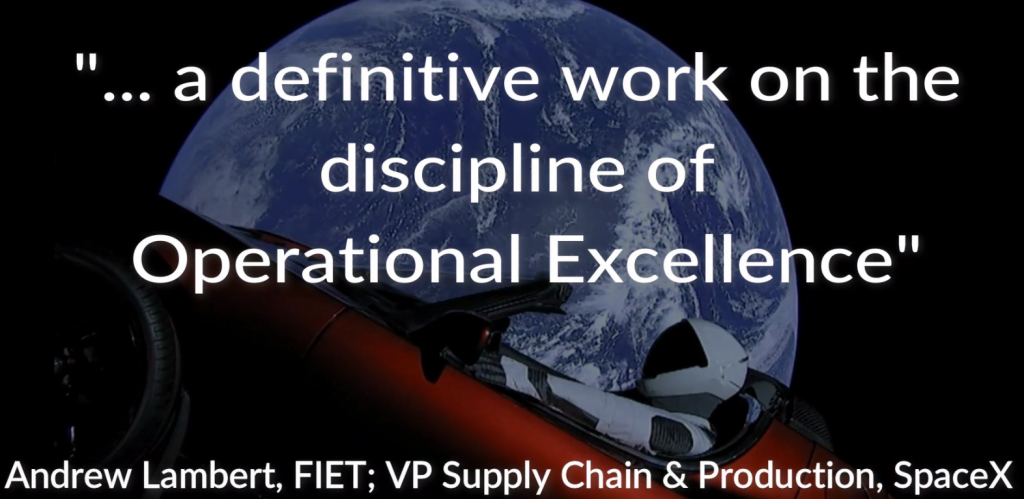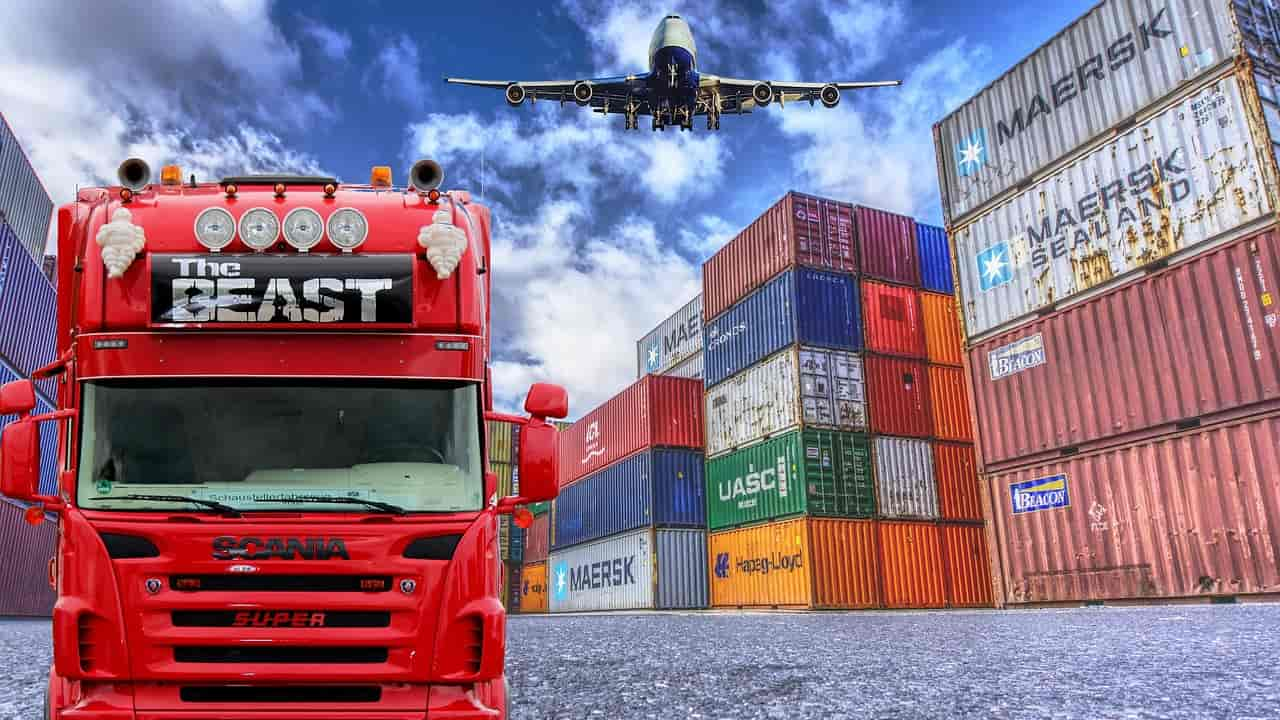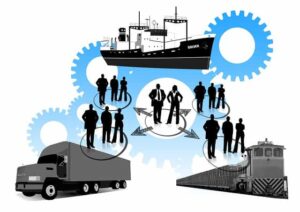Time to rethink Just-In-Time
Just-In-Time (JIT) inventory and manufacturing systems are management strategies where replenishment orders of raw materials, assemblies, and finished goods are based on production schedules; which themselves are based on real customer orders that are due at specific dates (even times). The objective is to increase efficiency and effectiveness by decreasing the waste associated with carrying more inventory than is needed at any given time along with the associated overheads (movement, storage, tied-up cash, and so on).
It all looks good on paper, and it has worked reasonably well over time. But as Mike Tyson famously said; “Everyone has a plan until they get punched in the mouth.”
And a lot of companies have been (repeatedly) punched in the mouth over the last few years.
The key to JIT being successful is found in the stability of the supply chain and logistics. To illustrate this, we need to go back in time.
Before the 1990’s, most major manufacturers tended to be concentrated in specific geographies. For instance, the automobile industry concentrated themselves in Michigan, meat processing in Nebraska and Illinois, and so on.
In doing so, these companies had their entire supply chains located within a few-hours drive of where production of the finished goods took place. And with suppliers being conveniently located near their customers, each enjoyed a great deal of stability and predictability in their supply chains and logistics; and JIT was something that could be pursued with a relative degree success.

In 1986, Richard Walleigh wrote an article in the Harvard Business Review entitled, “What’s Your Excuse for Not Using JIT?” In the article, Walleigh presents a series of objections against JIT that might be proposed by someone who might be cynical of the approaches and their benefits; and offers counter-arguments for each. And as Walleigh noted in his article;
“Excuse number 1: ‘Our suppliers won’t support JIT by delivering our raw material in small batches on a daily basis.’”
And goes on to explain the countermeasure should be;
“Asking suppliers to make daily deliveries is a common mistake of managers who focus on the inventory-reduction benefits of JIT. Ultimately, this is the right thing to do, but it’s the wrong place to start. If manufacturing executives recognize JIT as a problem-solving technique rather than an inventory-reduction plan, the proper starting point will be clearer. JIT should be adopted and practiced inside the factory, where the company can control any problems, rather than outside, where close cooperation with another organization is necessary. Once a company begins to master JIT, it should then begin to work with suppliers to help them understand the benefits it holds for both parties.”
In 1988, Michael Porter wrote an article in the Harvard Business Review entitled “Clusters and the New Economics of Competition” where he shared the advantages realized by companies being located near their competitors. There was a concentration of talent (the workforce was more knowledgeable of the work), the suppliers could supply multiple customers with similar items, and transportation costs were minimal compared with being further afield.
Globalization
But the 1990’s brought many transformations to the way business was done. And although there were many obvious benefits to these transformations, there was also peril in the number of variables introduced and their possible iterations.
Some of these events include;
- 1988; Toyota opens it first plant in the United States located in Georgetown, Kentucky. Although Toyota had a presence in the United States prior to this plant being built, they were mostly subassemblies and partnerships with automakers in the United States. Toyota’s plant in Kentucky changed all of that by establishing a formal production presence for their vehicles within the United States.
- 1988; The Canada–United States Free Trade Agreement came into effect. This treaty eliminated many tariffs on cross-border trade and harmonized many regulations so that the trade in goods could be made more easily.
- 1993; The European Union was formalized and founded with the signing of the Maastricht Treaty, which was a major waypoint in a long process that started with the signing of the Treaty of Paris that created the European Commission (that still exists); which was originally formed to harmonize the trade in steel and coal among the founding countries of was an organization, West Germany, France, Italy, Netherlands, Belgium, and Luxembourg.
- 1994; The North American Free Trade Agreement came into effect. This treaty increased the integration already enjoyed by the Canada–United States Free Trade Agreement and expanded its reach to include Mexico.
- 2001; China was admitted to the World Trade Organization, thus opening China to trade with the rest of the world and giving the rest of the world access to the Chinese marketplace.
Indeed, the world underwent a seismic transformation in trade in less than fifteen years; and all was well and good until it wasn’t well and good.
With trade being global, daily deliveries are now the increasingly rare exception rather than the rule. For instance, under normal conditions, the actual time of transport on the high-seas alone from China to Los Angeles is 15 to 20 days. Add to that the time for inland freight from the Chinese supplier to the Chinese port and from Los Angeles to the end-consumer, and total transit time can easily be double that.
So, the theory of JIT pre-1990 had to evolve to accommodate extended transit times. But the new theories were still predicated on the stability and predictability of the world’s governments and their wanting to maintain a level of economic prosperity devoid of interruptions.
Globalization Risks
What the theories failed to adequately take into consideration were the risks to the supply chains from natural disasters (not to mention natural disasters whose disruptive ill effects were amplified by government actions), and that governments were not reliable allies of the globalization the companies assumed and the criticality of the supply chains.
- 2011; Not only did the Fukushima Tsunami cause a nuclear disaster as a powerplant went into meltdown, the event also disrupted the automotive and semi-conductor supply chains with considerable magnitude and duration.
- 2011; The massive flooding in Thailand (unrelated to the Fukushima Tsunami), but nearly as disruptive to the supply chain for computer hard drives and the automotive industry.
- 2018; The “Trump Tariffs” were a wide-spread series of tariffs placed against goods imported into the United States from almost every trading partner of the United States. These tariffs, or the threat of tariffs, also resulted in the renegotiation of the North American Free Trade Agreement to create United States–Mexico–Canada Agreement.
- 2020; The terms of Brexit came into full force in January and the result was widespread disruptions to the supply chain and snarled logistics as new rules were hastily rolled out and this caused production plants across the United Kingdom to shut down. Those members in the European Union did not experience disruptions to the magnitude that was experienced by companies in the United Kingdom.
- 2020; And we are all aware of COVID and the chaos in the supply chain and logistics that were the result of countless disorderly plant shut-downs or the hasty changing of what companies had produced to making products to combat the pandemic. This turned into a global supply chain crisis as the pandemic rather quickly wound-down and pent-up demand was unleashed. The effects of these challenges are still unfolding.
- 2023; The Recession… Time will tell, but there will certainly be an impact felt in the supply chain.
Countermeasures
What is needed is an evolution of the Just-In-Time mindset combined with a fundamental rethink of the risk-analysis in the supply chain and the possible countermeasures that can be taken.
Sure, there are terms and conditions in contracts that hold suppliers accountable for performance. And we can purchase insurances to guard against disruptions to our supply chains from various causes. But these only offer financial relief (if you can collect) and won’t salve the disappointment our customers will feel when we fail to deliver.
- We need to consider carrying more inventory. This flies in the face of the premise of Just-In-Time, but think of it as self-insuring. If there is a disruption to your supply chain, what is the cost of having to shut your production line down? This will give an idea of how much inventory (and what inventory) you might consider carrying.
- We need to consider alternative suppliers. In addition to our primary supplier, it might be appropriate to maintain a secondary supplier. But we have to keep in mind that we have to give the secondary supplier a book of business. Otherwise, the chances of their being there for you in your time of need is near nil (or at a considerable cost).
- We need to consider suppliers that are located closer. Instead of far-shoring, perhaps there is the opportunity to near-shore. This will probably shorten the time it takes for the goods to be delivered. You might be able to have more frequent deliveries in smaller batches. It is likely that the cost of maintaining the relationships will be less. And you might also be able to take advantage of trade treaties already in place.
- We need to consider ensuring our suppliers are in locations with governments and societies that are stable and predictable. As we have seen, governments can be fickle (perhaps even your own), and we need to weigh the risks and costs of having our suppliers in locations that are governed whimsically or where the society itself is volatile.
Conclusion
Just-In-Time worked well in the world of Michael Porter and Richard Walleigh where industrial clusters and entire business ecosystems were within a few-hour drive of the final production plant. But if you are a business whose suppliers are further afield (or even your supplier’s supplier), then you need to consider the risks associated and plan accordingly. Failing to do so and ignoring (or under-appreciating) the risks and associated costs will put your business in peril.
The supply chain, and our understanding of it, has been transformed; first by globalization, then on the realization that the world is not as stable and predictable as we believed.
And because of these experiences, Just-In-Time needs a rethink.
About the Author

Joseph Paris is an international expert in the field of Operational Excellence, organizational design, strategy design and deployment, and helping companies become high-performance organizations. His vehicles for change include being the Founder of; the XONITEK Group of Companies; the Operational Excellence Society; and the Readiness Institute.
He is a sought-after speaker and lecturer and his book, “State of Readiness” has been endorsed by senior leaders at some of the most respected companies in the world.
Connect with him on LinkedIn.







